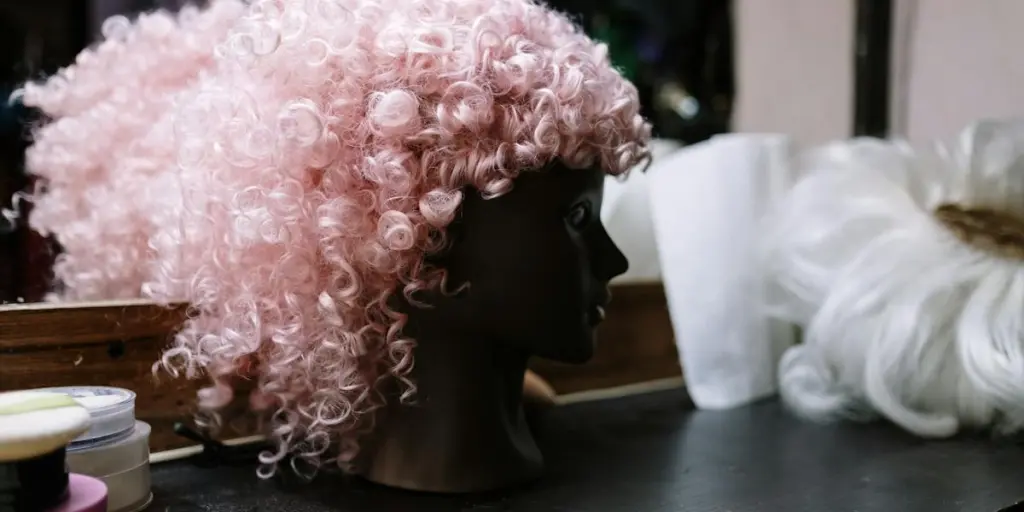Synthetic hair has suffered a bad reputation for being cheap and noticeably fake. It created a high disdain for wigs made from them, so most female consumers preferred purchasing human hair despite its high cost.
But synthetic hair has gotten a much-needed upgrade, with modern ones nearly indistinguishable from human hair. Although cheap ones still roam the market, more people now accept synthetic hair as a more affordable alternative.
Here’s a guide that explains the differences between human and synthetic hair and how to stock up on synthetic hair wigs.
Table of Contents
Synthetic vs. human hair: What are the differences?
What consumers look for when searching for synthetic hair wigs
Rounding up
Synthetic vs. human hair: What are the differences?
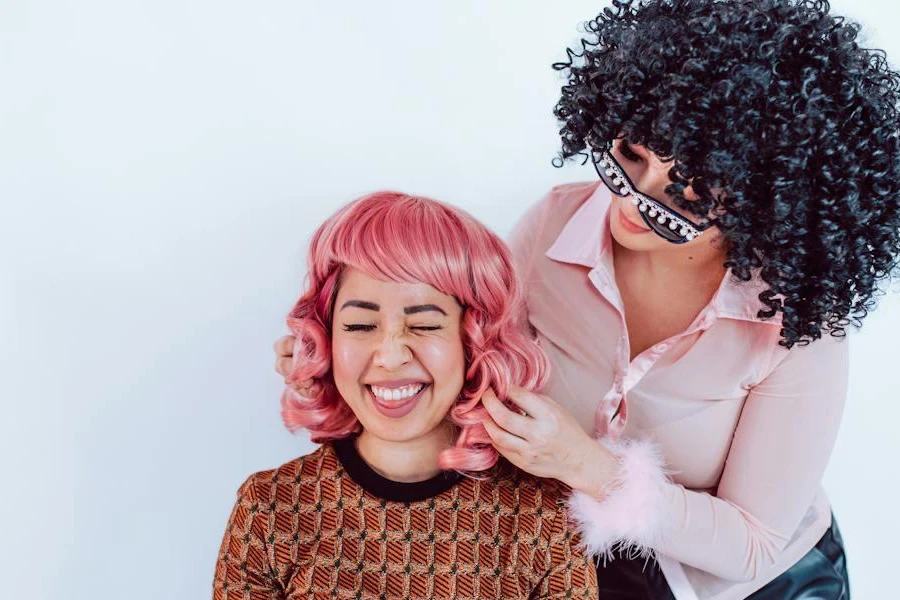
When consumers want wigs or hairpieces, they must choose between synthetic and human hair. But what differences make a person prefer one over the other?
For starters, human-hair wigs are popular for having a very realistic look. They also last longer than their synthetic counterparts, as long as consumers care for them. But there’s a catch: they’re so lifelike that consumers must care for them like they do their regular hair—that means regular grooming and styling before use.
On the other hand, synthetic hair has gotten a better reputation over the years. The “realistic look” argument is no longer a deal-breaker, as the highest-quality wigs don’t fall short compared to their human counterparts.
Although synthetic hair lasts longer than its previous iterations, it still needs replacement after three to four months of use. Regardless, they remain more accessible than human hair.
Another big advantage of synthetic hairpieces is their affordability. Since synthetic hair wigs are not as expensive as their human counterparts, they are great for beginners. They can also try different styles before pouring more money into expensive variants.
What consumers look for when searching for synthetic hair wigs
Hairpiece type
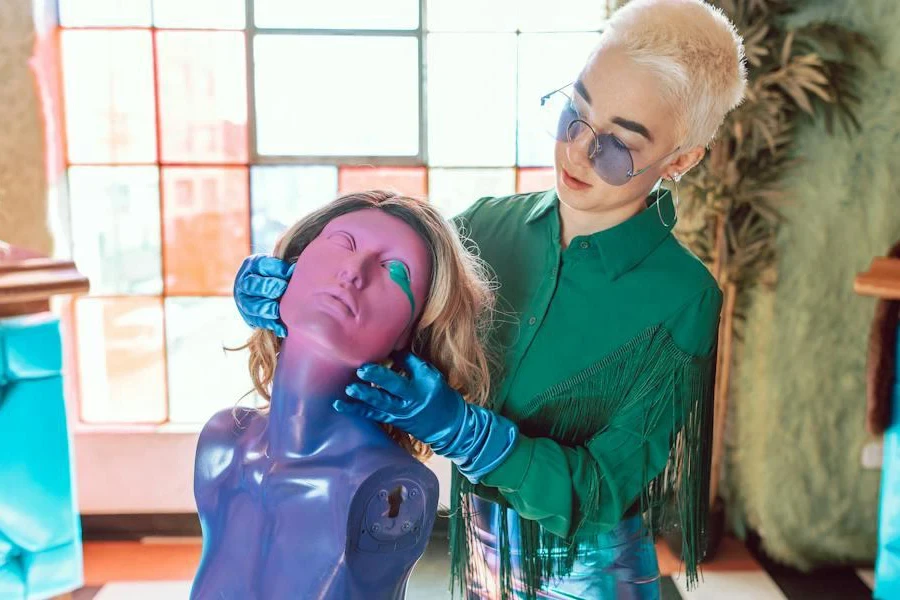
Some consumers see wigs as fun accessories, while others need them to rebuild confidence. Whatever the reasons are, consumers first determine the kind of wig they’ll require before going over other details.
Here’s a look at the different hairpieces that can use synthetic hair and the types of consumers that use them.
Hair toppers and enhancers
Hair toppers are popular for covering areas with less hair, typically at the top of the head. These wiglets are perfect for disguising thinning and part widening, which can be embarrassing for some consumers.
Usually, consumers can wear them with clips. But sellers can also offer hypoallergenic tapes to those without enough hair to support those clips. The best part is that synthetic hair toppers don’t need a lot of styling and maintenance.
Full cap wigs
Synthetic full-cap wigs are like saviors for ladies with complete or partial hair loss caused by cancer treatments or more severe alopecia.
Even better, synthetic full wigs are always ready to wear, so women may not need to style them frequently. In addition to being popular among cancer and hair loss patients, full wigs are perfect for consumers seeking hassle-free hairstyle changes.
Hairpieces and extensions
Women also turn to clip-in hair extensions or temporary hair pieces if they’re looking for partial coverage or want to handle a specific hair loss area. These pieces offer enough coverage and can serve as hair lengtheners, too.
In addition, these hairpieces can come in different styles. They’re available in buns, fringes, ponytails, and ¾ pieces that easily clip into natural hair.
Hair systems and wigs for men
Men also suffer from severe hair loss, so they may come looking for some synthetic hair wigs. In that case, they’ll see hair pieces with full scalp coverage as the best option.
Usually, men go for wigs that look virtually undetectable. Men also love options that feel super snug and can be cut at the barber’s shop for the perfect fit.
Alternatively, they may only use hair systems to cover some top thinning. These wigs disguise the top of the head while blending into natural hair on the sides and back.
Cap construction
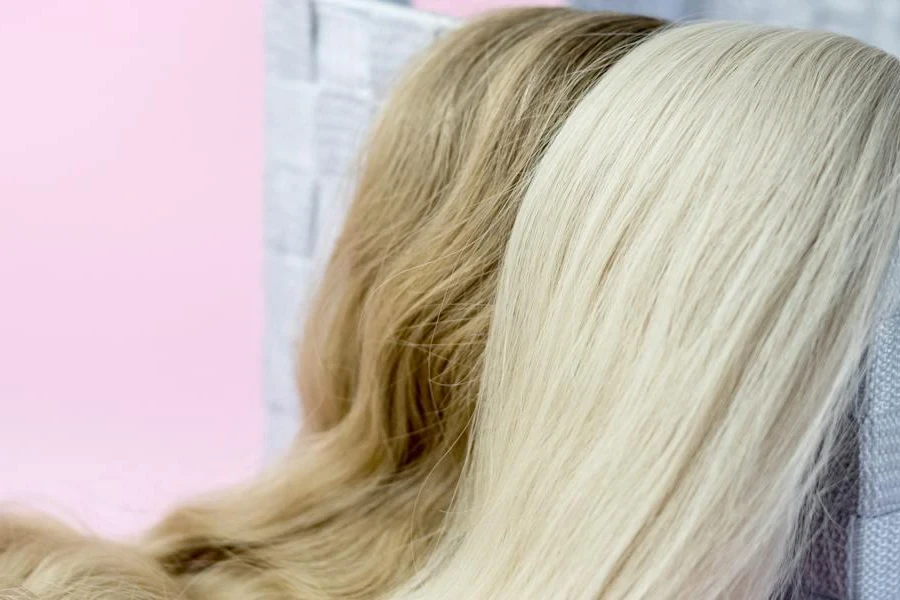
Synthetic wigs (for men or women) come with caps that help secure the hair to the wearer’s head. However, the cap type determines how comfortable, expensive, and natural the wig will look.
Here’s a look at the options available and why consumers may choose them.
| Wig cap construction | Description |
| Lace front wigs | These wigs use sheer lace materials that blend with the wearer’s hairline. People looking for an affordable option with natural-looking hairlines often choose these wigs. |
| Full lace wigs | These wigs use lace materials for the entire cap, giving them natural movement and allowing for easy styling. Women who prefer changing their wig hairstyles (and are still on a budget) go for full lace wigs. |
| Monofilament wigs (single and double) | Monofilament wigs use transparent, mesh-like materials to create the most natural look possible. Since they’re more expensive than lace, these wigs only appeal to consumers with a bit more budget to spare or those with complete hair loss. |
| Combination wigs | These wigs combine two construction methods. For example, manufacturers can use lace techniques to create monofilament wigs. If consumers want to cut some costs while enjoying the best of both worlds, they’ll choose combination wigs. |
| Capless wigs | Also known as wefted or basic wig caps, these are the cheapest wigs available. They’re ideal for consumers hoping to spend as little as possible on wigs. |
Wig style and texture
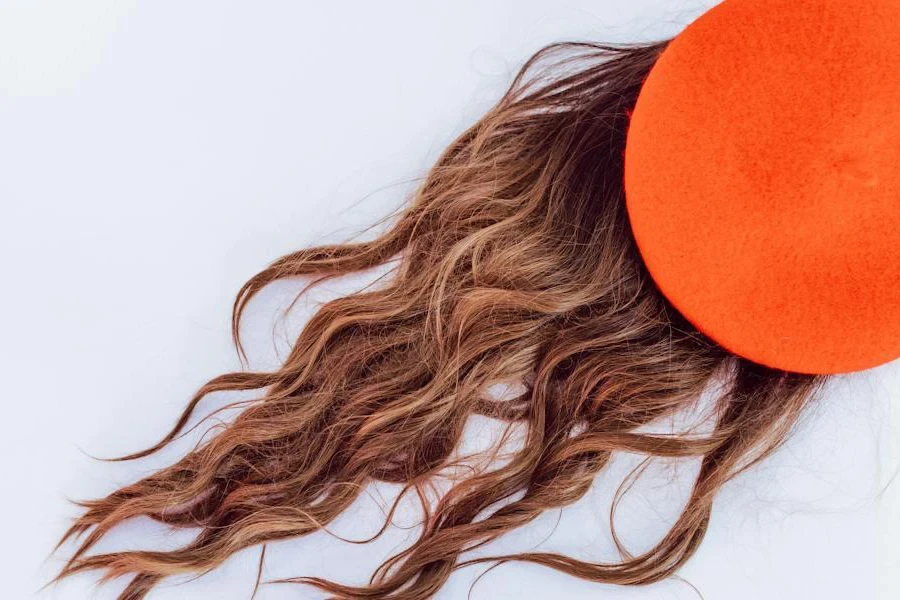
Once consumers decide on their preferred wig and cap construction, they’ll consider style next. One important factor in determining the styles consumers want is face shape.
Different face shapes require different wig styles, ranging from short to long and bobs to wavy. With that in mind, here’s a table showing the styles for the five most common face shapes.
| Face shape | Preferred wig style |
| Oval shape | These face shapes can work with any wig style. However, the symmetrical look works best with long bobs or mid-length wigs. |
| Round shape | Round faces may also choose from various wig styles, but the wrong one will exaggerate the wrong features. However, round-face consumers avoid such issues by going for short bobs or crops with fringe—any style that shapes their faces would look amazing. |
| Heart-shaped shape | Ladies with heart-shaped faces search for wigs that broaden their chin while complementing other fantastic features. As a result, they often demand layered wigs and short hair with fringe bangs. |
| Square shape | These consumers need something to lengthen their faces and soften sharp angles. So, they opt for longer wigs with loose waves. |
| Oblong shape | These consumers need wigs that make their faces look wider. Hence, they’ll choose short and medium-length layered wigs. |
Note: These styles mostly apply to full wigs. Other wig types depend more on color, texture, and size for the perfect fit.
Consumers also choose their preferred wig texture while selecting a compatible style for their face. Texture refers to the wig’s hair pattern, and buyers may choose from the three types below:
- Straight
- Wavy
- Curly
Straight and wavy textures are highly recommended for consumers purchasing their first wigs. They don’t require as much maintenance as curly textures. While curly wigs look jaw-dropping, failing to maintain them will damage their looks.
Wig size
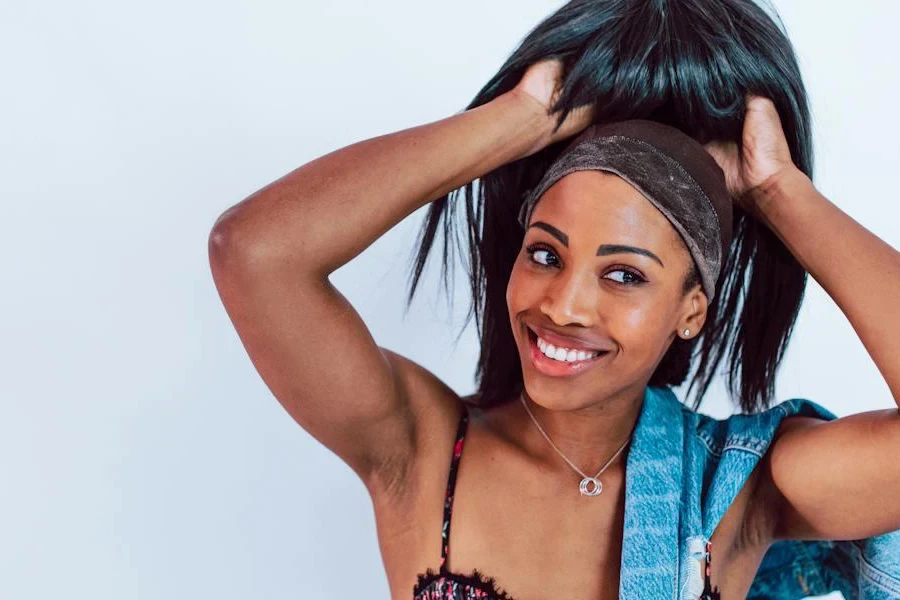
Although 95% of consumers can use average-sized wigs, these hair accessories can also come in large and petite sizes. Many wigs even come with adjustable straps to help get a more comfortable and secure fit, but that may not suffice for some consumers.
The good news is that most consumers already have their measurements ready. Here are the three measurement categories they base their search on:
- Ear-to-ear
- Front-to-back
- Circumference
| Size | Ear-to-ear | Front-to-back | Circumference |
| Large | 14” | 15.5” | 23” |
| Average/Large | 13.75” | 14.75” | 22.25” |
| Average | 13.5” | 14.25” | 21.5” |
| Petite/Average | 13.25” | 13.75” | 21.25” |
| Small/Petite | 13” | 13.25” | 21” |
| Child | 12” | 12” | 19–20” |
Rounding up
Consumers get wigs for different reasons. While some use them to try various styles, others need them to combat serious issues like hair loss.
For this reason, manufacturers pump the market with various types, styles, and sizes to offer something for everyone. More importantly, synthetic hair is becoming more popular as recent technologies ensure quality ones look as real as human hair.
So, there is no need to worry about synthetic hair’s bad reputation. They’re quickly becoming profitable investments in 2024, making now the best time to enter the market.
